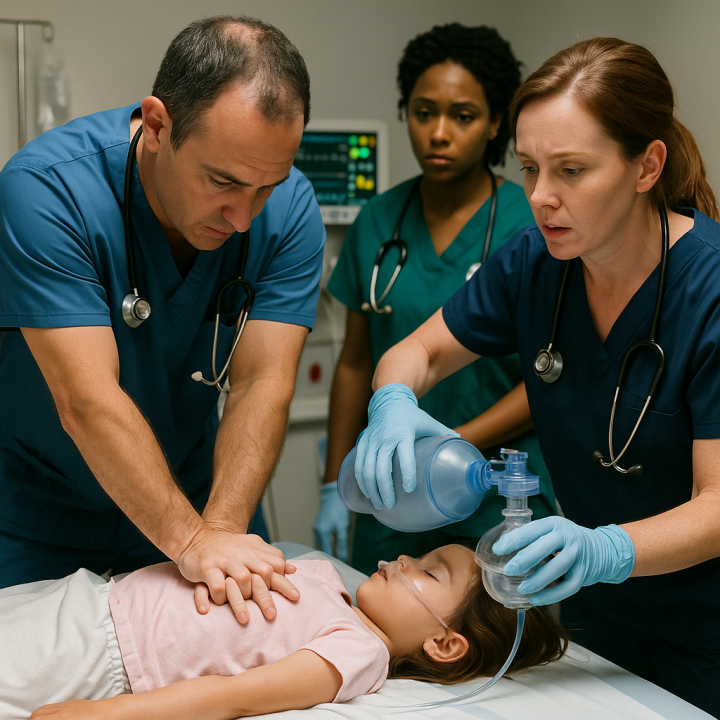When it comes to resuscitation, one size does not fit all. The approach to pediatric codes differs significantly from adult codes — not just in size and equipment, but also in physiology, causes of arrest, and emotional dynamics. Whether you’re an ACLS, PALS, or BLS provider, understanding these differences is critical for delivering life-saving care.
Here’s what you need to know:
1. Causes of Arrest Are Different
- Adults: The majority of adult cardiac arrests are cardiac in origin (e.g., ventricular fibrillation, ischemia, arrhythmias).
- Pediatrics: In children, arrest is usually respiratory in origin — hypoxia or airway obstruction leads to bradycardia and ultimately asystole.
👉 Implication: Early airway management and effective ventilation are critical in pediatric codes.
2. Initial Rhythms Differ
- Adults: More likely to present with a shockable rhythm (VF or pulseless VT).
- Children: More often present with non-shockable rhythms (asystole or PEA).
👉 Implication: Be prepared for a focus on high-quality CPR and ventilation over defibrillation in pediatric cases.
3. Medication Dosing Is Weight-Based
- Adults: Standard doses of epinephrine, amiodarone, and other ACLS drugs.
- Pediatrics: Weight-based dosing is crucial. Dosing errors are a major risk — which is why tools like the Broselow tape are invaluable.
👉 Implication: Always confirm weight-based doses before administration.
4. Equipment Needs Differ
- Airway: Pediatric patients need appropriately sized masks, ET tubes, and airway adjuncts.
- Defibrillation: Requires lower energy doses (e.g., 2–4 J/kg) and pediatric-sized pads or paddles.
👉 Implication: Pediatric equipment should always be checked and readily available on resuscitation carts.
5. Emotional Dynamics
- Pediatric codes can be more emotionally charged for teams — the presence of parents, the age of the patient, and lower survival rates all contribute to higher stress levels.
👉 Implication: Leaders should maintain clear communication, manage team stress, and, when possible, support the family.
6. Post-Arrest Care
- Children are more likely to suffer anoxic brain injury after arrest.
- Post-ROSC care focuses on ventilation, oxygenation, temperature control, and neurologic monitoring.
Conclusion
The core principles of resuscitation — high-quality CPR, early defibrillation when appropriate, and rapid identification of reversible causes — apply to both adult and pediatric codes. But the specifics matter:
- In children: Think airway, breathing, and early intervention.
- In adults: Focus on early defibrillation and addressing cardiac causes.
Regular training in PALS (Pediatric Advanced Life Support) and pediatric code simulations are essential to maintaining these skills. When you’re prepared, you can make all the difference — no matter the patient’s age.


